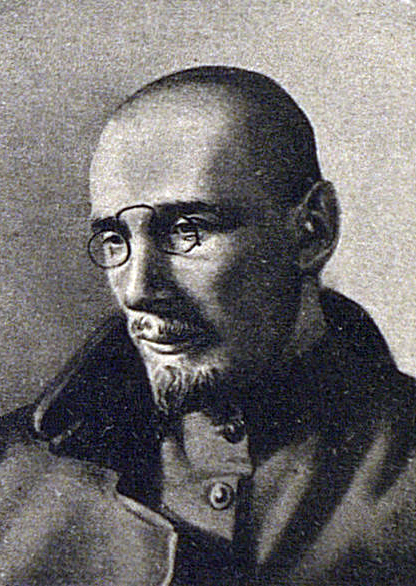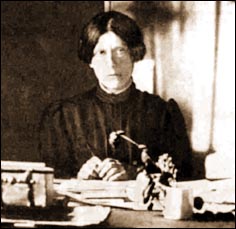|
Left SR Uprising
The Left SR uprising, or Left SR revolt, was an uprising against the Bolsheviks by the Left Socialist Revolutionary Party. The uprising started on 6 July 1918 and was claimed to be intended to restart the war against Germany.Boniece, Sally A. link "Don Quixotes of the Revolution"? The Left SRs as a Mass Political Movement Kritika: Explorations in Russian and Eurasian History 5.1 (2004) 185–194 It was one of a number of left-wing uprisings against the Bolsheviks that took place during the Russian Civil War. Background The revolt was led by the Left Socialist-Revolutionaries in Moscow. Previously, the Socialist Revolutionary Party had supported the continuation of the war by the Provisional Government after the February Revolution of 1917. The Bolshevik Party came to power in November 1917 through the simultaneous election in the soviets and an organized uprising supported by military mutiny. Several of the main reasons the population supported the Bolsheviks were to end the w ... [...More Info...] [...Related Items...] OR: [Wikipedia] [Google] [Baidu] |
Russian Civil War
{{Infobox military conflict , conflict = Russian Civil War , partof = the Russian Revolution and the aftermath of World War I , image = , caption = Clockwise from top left: {{flatlist, *Soldiers of the Don Army *Soldiers of the Siberian Army *Suppression of the Kronstadt rebellion *American troop in Vladivostok during the intervention *Victims of the Red Terror in Crimea *Hanging of workers in Yekaterinoslav by the Austrians *A review of Red Army troops in Moscow. , date = 7 November 1917 – 16 June 1923{{Efn, The main phase ended on 25 October 1922. Revolt against the Bolsheviks continued in Central Asia and the Far East through the 1920s and 1930s.{{cite book, last=Mawdsley, first=Evan, title=The Russian Civil War, location=New York, publisher=Pegasus Books, year=2007, isbn=9781681770093, url=https://archive.org/details/russiancivilwar00evan, url-access=registration{{rp, 3,230(5 years, 7 months and 9 day ... [...More Info...] [...Related Items...] OR: [Wikipedia] [Google] [Baidu] |
Ivar Smilga
Ivar Tenisovich Smilga (russian: И́вар Тени́сович Сми́лга, lv, Ivars Smilga; 1892–1938) was a Latvian Bolshevik leader, Soviet politician and economist. He was a member of the Left Opposition in the Soviet Union. Early life Ivar was born in Aloja in the Governorate of Livonia (modern Latvia), to parents he described as "land-owning farmers" and "highly intellectual.". His father played an active part in the 1905 Revolution, and was elected Chairman of the Revolutionary Administrative Committee for his district. In 1906, Tenis Smilga was caught and killed by a punitive expedition sent to crush the revolt in Livonia. Revolutionary career Smilga joined the Russian Social Democratic Labour Party (RSDLP) as a 14 year schoolboy, in January 1907, and was arrested for the first time during a May Day demonstration that year. In 1910, he was again arrested for taking part in a student demonstration in Moscow to mark the death of Leo Tolstoy, calling for the a ... [...More Info...] [...Related Items...] OR: [Wikipedia] [Google] [Baidu] |
Central Powers
The Central Powers, also known as the Central Empires,german: Mittelmächte; hu, Központi hatalmak; tr, İttifak Devletleri / ; bg, Централни сили, translit=Tsentralni sili was one of the two main coalitions that fought in World War I (1914–1918). It consisted of the German Empire, Austria-Hungary, the Ottoman Empire, and the Kingdom of Bulgaria and was also known as the Quadruple Alliance.german: Vierbund, tr, Dörtlü İttifak, hu, Központi hatalmak, bg, Четворен съюз, translit=Chetvoren sūyuz Colonies of these countries also fought on the Central Powers' side such as German New Guinea and German East Africa, until almost all of their colonies were occupied by the Allies. The Central Powers faced and were defeated by the Allied Powers that had formed around the Triple Entente. The Central Powers' origin was the alliance of Germany and Austria-Hungary in 1879. Despite having nominally joined the Triple Alliance before, Italy ... [...More Info...] [...Related Items...] OR: [Wikipedia] [Google] [Baidu] |
Eastern Europe
Eastern Europe is a subregion of the European continent. As a largely ambiguous term, it has a wide range of geopolitical, geographical, ethnic, cultural, and socio-economic connotations. The vast majority of the region is covered by Russia, which spans roughly 40% of the continent's landmass while accounting for approximately 15% of its total population."The Balkans" , ''Global Perspectives: A Remote Sensing and World Issues Site''. Wheeling Jesuit University/Center for Educational Technologies, 1999–2002. It represents a significant part of ; the main socio-cultural characteristics of Eastern Europe have historically been defined by the trad ... [...More Info...] [...Related Items...] OR: [Wikipedia] [Google] [Baidu] |
Treaty Of Brest-Litovsk
The Treaty of Brest-Litovsk (also known as the Treaty of Brest in Russia) was a separate peace treaty signed on 3 March 1918 between Russia and the Central Powers ( Germany, Austria-Hungary, Bulgaria, and the Ottoman Empire), that ended Russia's participation in World War I. The treaty was signed at German-controlled Brest-Litovsk ( pl, Brześć Litewski; since 1945, Brest, now in modern Belarus), after two months of negotiations. The treaty was agreed upon by the Russians to stop further invasion. As a result of the treaty, Soviet Russia defaulted on all of Imperial Russia's commitments to the Allies and eleven nations became independent in eastern Europe and western Asia. Under the treaty, Russia lost all of Ukraine and most of Belarus, as well as its three Baltic republics of Lithuania, Latvia, and Estonia (so-called Baltic governorates in the Russian Empire), and these three regions became German vassal states under German princelings. Russia also ceded its pr ... [...More Info...] [...Related Items...] OR: [Wikipedia] [Google] [Baidu] |
Mezhraiontsy
The Mezhraiontsy ( rus, межрайонцы, p=mʲɪʐrɐˈjɵnt͡sɨ), usually translated as the "Interdistrictites,"''Mezhraionka'' and ''Mezhraiontsy'' are derived from the Russian ''"mezh-"'' (meaning "inter-" or "between'") + ''" raion"'' (meaning "district" or "region"). were members of a small independent faction of the Russian Social Democratic Labor Party (RSDLP), which existed between 1913 and 1917. Although the formal name of this organization was Russian Social Democratic Labor Party (Internationalists), the names "Mezhraionka" for the organization and "Mezhraiontsy" for its participants were commonly used to indicate the group's intermediate ideological position between the rival Menshevik and Bolshevik wings of the divided RSDLP. The Mezhraiontsy merged with the Bolsheviks during the Russian Revolution of 1917. Organizational history Background Russian social democrats had been split into numerous factions along political and ethnic lines since at least 1903 whe ... [...More Info...] [...Related Items...] OR: [Wikipedia] [Google] [Baidu] |
Julius Martov
Julius Martov or L. Martov (Ма́ртов; born Yuliy Osipovich Tsederbaum; 24 November 1873 – 4 April 1923) was a politician and revolutionary who became the leader of the Mensheviks in early 20th-century Russia. He was arguably the closest friend Vladimir Lenin ever had, and was a friend and mentor of Leon Trotsky, who described him as the "Hamlet of Democratic Socialism".Figes, p. 468Trotsky, Leon ''The History of the Russian Revolution'' p. 1156 Early life Martov was born to a middle-class, educated and politically aware Jewish family in Constantinople, Ottoman Empire (modern day Istanbul). His sister was the fellow Menshevik leader Lydia Dan. Brought up in Odessa, he suffered constant humiliation as a schoolboy because of being Jewish. In his teens, he admired the Narodniks, but the famine crisis made him a Marxist: "It suddenly became clear to me how superficial and groundless the whole of my revolutionism had been until then, and how my subjective political romant ... [...More Info...] [...Related Items...] OR: [Wikipedia] [Google] [Baidu] |
Soviets
Soviet people ( rus, сове́тский наро́д, r=sovyétsky naród), or citizens of the USSR ( rus, гра́ждане СССР, grázhdanye SSSR), was an umbrella demonym for the population of the Soviet Union. Nationality policy in the Soviet Union During the history of the Soviet Union, different doctrines and practices on ethnic distinctions within the Soviet population were applied at different times. Minority national cultures were never completely abolished. Instead the Soviet definition of national cultures required them to be "socialist by content and national by form", an approach that was used to promote the official aims and values of the state. The goal was always to cement the nationalities together in a common state structure. In the 1920s and the early 1930s, the policy of national delimitation was used to demarcate separate areas of national culture and the policy of korenizatsiya (indigenisation) was used to promote federalism and strengthen non-Rus ... [...More Info...] [...Related Items...] OR: [Wikipedia] [Google] [Baidu] |
Socialist Revolutionary Party
The Socialist Revolutionary Party, or the Party of Socialist-Revolutionaries (the SRs, , or Esers, russian: эсеры, translit=esery, label=none; russian: Партия социалистов-революционеров, ), was a major political party in late Imperial Russia, and both phases of the Russian Revolution and early Soviet Russia. The SRs were agrarian socialists and supporters of a democratic socialist Russian republic. The ideological heirs of the Narodniks, the SRs won a mass following among the Russian peasantry by endorsing the overthrow of the Tsar and the redistribution of land to the peasants. The SRs boycotted the elections to the First Duma following the Revolution of 1905 alongside the Russian Social Democratic Labour Party, but chose to run in the elections to the Second Duma and received the majority of the few seats allotted to the peasantry. Following the 1907 coup, the SRs boycotted all subsequent Dumas until the fall of the Tsar in the Febru ... [...More Info...] [...Related Items...] OR: [Wikipedia] [Google] [Baidu] |
Left Socialist-Revolutionaries
The Party of Left Socialist-Revolutionaries (russian: Партия левых социалистов-революционеров-интернационалистов) was a revolutionary socialist political party formed during the Russian Revolution. In 1917, the Socialist Revolutionary Party split between those who supported the Russian Provisional Government, established after the February Revolution and those who supported the Bolsheviks, who favoured the overthrow of the Provisional Government and the placing of political power in the hands of the Congress of Soviets. Those that continued to support the Provisional Government became known as the Right SRs while those who aligned with the Bolsheviks became known as the Left Socialist-Revolutionaries or Left SRs. After the October Revolution, the Left SRs formed a coalition government with the Bolsheviks from November 1917 to July 1918, but resigned its position in government after the signing of the Treaty of Brest-Lit ... [...More Info...] [...Related Items...] OR: [Wikipedia] [Google] [Baidu] |
Left-wing Uprisings Against The Bolsheviks
The left-wing uprisings against the Bolsheviks, known in anarchist literature as the Third Russian Revolution, were a series of rebellions, uprisings, and revolts against the Bolsheviks by oppositional left-wing organizations and groups that started soon after the October Revolution, continued through the years of the Russian Civil War, and lasted into the first years of Bolshevik rule of the Soviet Union. They were led or supported by left-wing groups such as some factions of the Socialist Revolutionary Party, Left Socialist-Revolutionaries, Mensheviks, and anarchists. Generally, the uprisings began in 1918 because of the Bolshevik assault on Soviet democracy, the signing of the Treaty of Brest-Litovsk (which many saw as giving overly generous concessions to the Central Powers also seen by some as limiting the revolutionary potential causing the workers, soldiers and peasantry outside the Soviet state to rebel against the continuing strife caused by the war), and opposition ... [...More Info...] [...Related Items...] OR: [Wikipedia] [Google] [Baidu] |





.jpg)



%2C_Russian_revolutionary_(small).jpg)